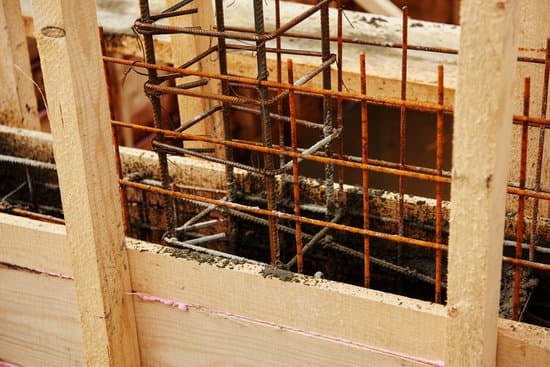Considering borrowing against your 401k for home improvements? Many homeowners find themselves in the same position. Before making any decisions, it is important to understand the benefits and risks of using your retirement savings to fund renovations. In this article, we will explore whether you can borrow against your 401k for home improvements, and provide valuable information on the rules and regulations, benefits, risks, alternatives, and the process involved.
Borrowing against a 401k for home improvements involves taking out a loan from your retirement savings account to fund renovation projects. This can be an attractive option for individuals looking for low-interest financing options. However, it is crucial to weigh the advantages and disadvantages before making such a decision. In the following sections, we will delve into the intricacies of borrowing against your 401k for home improvements.
Understanding how 401k works and its various types is essential before considering this type of loan. Additionally, familiarizing oneself with the rules and regulations governing 401k loans – including limits on borrowing amounts and repayment terms – will help make an informed decision when it comes to using retirement funds for home renovations.
Understanding Your 401k
A 401(k) is a retirement savings plan sponsored by an employer allowing employees to save and invest a portion of their paycheck before taxes are taken out. This can be a valuable way to save for retirement, as contributions can grow tax-deferred until withdrawal.
There are different types of 401(k) plans such as traditional 401(k)s, Roth 401(k)s, and safe harbor 401(k)s. Each has its own set of eligibility requirements and rules for loans.
When it comes to borrowing against your 401k for home improvements, it’s important to understand the specifics of your particular plan. Not all 401(k) plans allow for loans, so you should check with your plan administrator to see if it’s even an option. If loans are permitted, there may be limits on how much you can borrow and restrictions on what the funds can be used for.
Before considering borrowing against your 401k, it’s essential to assess all aspects of this decision and whether it aligns with your long-term financial goals. While using these funds for home improvements can provide immediate benefits in terms of enhancing your living space or increasing property value, there are also potential risks that need to be carefully evaluated.
| Type of 401k Plans | Eligibility for Loans |
|---|---|
| Traditional 401(k)s | May allow loans |
| Roth 401(k)s | May allow loans |
| Safe Harbor 401(k)s | May not allow loans |
Rules and Regulations
Borrowing against your 401k for home improvements is a viable option for many homeowners, but it’s important to understand the rules and regulations governing 401k loans before making a decision. A 401k is a retirement savings plan sponsored by an employer, which allows employees to save and invest a portion of their paycheck before taxes are taken out.
There are two main types of 401k plans – traditional 401k and Roth 401k, each with its own set of rules regarding loans.
When considering borrowing against your 401k for home improvements, it’s essential to be aware of the limits on the amount you can borrow and the repayment terms. The maximum amount that can be borrowed from a 401k is generally either $50,000 or half of the vested balance in the account, whichever is less. The loan must typically be repaid within five years, unless it is used for the purchase of a primary residence.
In addition to these limits, there are specific rules that dictate how the borrowed funds can be used. Generally, 401k loans can be used for any purpose, including home improvements.
However, borrowers need to ensure that they comply with the plan’s requirements and provide documentation when applying for the loan. It’s also crucial to understand that if you leave your job while you have an outstanding 401k loan, the remaining balance may become due in full, potentially leading to tax consequences if not repaid timely.
| Rules and Regulations | Information |
|---|---|
| Maximum Loan Amount | Either $50,000 or half of vested balance |
| Repayment Terms | Generally within five years |
| Usage Restrictions | Can be used for any purpose including home improvements with proper documentation |
Benefits of Borrowing Against Your 401k
Borrowing against your 401k for home improvements can be a viable option for many homeowners. Understanding the benefits and risks associated with this decision is crucial in making an informed choice. Here are some key advantages of utilizing your 401k funds for home renovations:
- Low interest rates: When you borrow against your 401k, you essentially become your own lender, which means that the interest you pay on the loan goes directly back into your retirement account. This often results in lower interest rates compared to traditional loans from financial institutions.
- No credit check: Unlike traditional loans, borrowing against your 401k does not require a credit check. This can be beneficial for individuals with less than stellar credit scores who may have difficulty obtaining a loan through other means.
- Flexibility in use of funds: While some financing options for home improvements may come with restrictions on how the funds can be used, borrowing against your 401k allows you the flexibility to use the money as needed for various renovation projects.
It’s important to note that while there are clear benefits to borrowing against your 401k, there are also potential risks and considerations that need to be carefully evaluated before making this decision. It’s advisable to consult with a financial advisor or tax professional to fully understand the implications of tapping into your retirement savings for home improvements.
Ultimately, borrowing against your 401k for home renovations can be an affordable financing option with favorable terms and flexibility. However, it’s essential to weigh the benefits against the potential drawbacks and explore alternative financing options before making a final decision.
Risks and Considerations
Potential Impact on Retirement Savings
Borrowing against your 401k for home improvements can have a significant impact on your retirement savings. When you take out a loan from your 401k, you are essentially borrowing money that would otherwise be invested and growing tax-deferred in your retirement account. This means that the funds you borrow will not benefit from compound growth over time, potentially reducing the overall value of your retirement savings.
It’s important to carefully consider how borrowing against your 401k could affect your long-term financial goals. Before making a decision, it’s advisable to consult with a financial advisor who can provide guidance on whether this option is suitable for your individual circumstances.
Tax Implications
Another consideration when borrowing against your 401k for home improvements is the potential tax implications. While 401k loans are not subject to income tax or penalties as long as they are repaid according to the terms of the loan, there can still be potential tax implications if you leave your job before repaying the loan in full.
If you separate from your employer for any reason, including retirement, resignation, or termination, any outstanding balance on a 401k loan may become due immediately. If you are unable to repay the loan within the specified timeframe, it could be treated as a distribution and become subject to income tax and potentially early withdrawal penalties if you are under age 59½.
Consider All Options Before Borrowing
Before deciding to borrow against your 401k for home improvements, it’s crucial to weigh all of the potential risks and considerations. It’s essential to explore alternative financing options such as personal loans, home equity loans, or lines of credit that may offer more favorable terms and minimize the impact on your retirement savings.
Additionally, taking into account future needs and contingencies is vital when evaluating whether borrowing against a 401k is the best approach for funding home improvements. Being fully informed about the potential risks involved in this type of financing will help individuals make more sound financial decisions in line with their long-term objectives.
Alternatives to Borrowing Against Your 401k
Borrowing against your 401k for home improvements is a significant decision that requires careful consideration of the benefits and risks involved. While using your 401k funds can be a viable option for financing home renovations, it’s important to explore alternative financing options before making a final decision.
Exploring Home Improvement Loans
One alternative to borrowing against your 401k for home improvements is to consider a home improvement loan. These types of loans are specifically designed for renovation projects and can offer competitive interest rates and flexible repayment terms. Home improvement loans typically do not require you to put your retirement savings at risk, making them a safer financing option for homeowners looking to complete renovation projects.
Home Equity Line of Credit (HELOC)
Another alternative financing option is a home equity line of credit (HELOC). A HELOC allows homeowners to borrow against the equity in their property and use the funds for home improvements. This type of loan often offers lower interest rates than traditional personal loans or credit cards, making it an attractive option for funding renovation projects.
Credit Cards and Personal Loans
Credit cards and personal loans are also potential alternatives for funding home improvement projects. While they may come with higher interest rates compared to other loan options, they provide flexibility and quick access to funds. However, it’s important to carefully consider the impact on your overall financial situation when choosing this type of financing.
When considering alternatives to borrowing against your 401k for home improvements, it’s crucial to carefully evaluate factors such as interest rates, repayment terms, and potential impact on your retirement savings. Before making a decision, weigh the pros and cons of each financing option available to ensure that you choose the best solution for your specific renovation project.
The Process of Borrowing Against Your 401k
Borrowing against your 401k for home improvements can be an attractive option for many homeowners. However, it’s important to understand the process and guidelines involved in order to make an informed decision. Here is a step-by-step guide on how to borrow against your 401k for home improvements:
- Check Your Plan’s Eligibility: The first step is to determine if your 401k plan allows for loans and if it permits borrowing for home improvement purposes. Not all plans offer this option, so it’s crucial to review the details of your specific plan.
- Understand Loan Limits: Each 401k plan sets its own limits on how much you can borrow. Typically, the maximum amount you can borrow is either $50,000 or 50% of your vested account balance, whichever is less. Make sure you are aware of these limitations before proceeding with the loan application.
- Complete the Loan Application: If your plan permits loans for home improvements and you are within the borrowing limits, you will need to complete a loan application provided by your plan administrator. This may require documentation of the intended use of funds for home improvements.
It’s important to note that each 401k plan may have specific requirements and processes, so it’s advisable to consult with your plan administrator or financial advisor for guidance throughout the loan application process.
Overall, borrowing against your 401k for home improvements requires careful consideration and adherence to the rules set forth by your specific plan. Understanding the process and following the necessary steps can help ensure a smooth and informed borrowing experience while using these funds for enhancing your home.
Conclusion
In conclusion, borrowing against your 401k for home improvements can be a viable option for those looking to fund renovation projects. However, it is crucial to fully understand the rules and regulations governing 401k loans, as well as the potential benefits and risks involved. While utilizing 401k funds can provide an affordable financing solution, it is important to carefully weigh the impact on retirement savings and any potential tax implications.
Before making a decision, individuals should consider alternative financing options for home improvements, such as home equity loans or personal loans. It is essential to compare the pros and cons of different loan options and evaluate which option best suits your financial situation and long-term goals.
Ultimately, borrowing against your 401k for home improvements should be approached with caution. Careful consideration of all available options, understanding the terms and conditions of 401k loans, and taking into account the potential impact on retirement savings are essential steps in making an informed decision. By thoroughly researching and evaluating all possibilities, individuals can make the best choice for their unique circumstances when it comes to funding home improvement projects.
Frequently Asked Questions
Can You Withdraw Money From 401k for Home Improvement?
Withdrawing money from a 401k for home improvement is possible, but it’s important to consider the implications. While it may provide funds for renovations, it can also impact retirement savings and may incur taxes and penalties.
Is It a Good Idea to Borrow From 401k for a House?
Borrowing from a 401k for a house could be tempting due to the ease of access to funds, but it’s not always advisable. It can deplete retirement savings and come with potential penalties if not repaid according to the plan terms.
What Reasons Can You Withdraw From 401k Without Penalty?
There are several reasons you can withdraw from a 401k without penalty, such as reaching age 59½, becoming disabled, experiencing financial hardship, or using the funds for qualified education expenses or certain medical expenses. Each situation should be carefully evaluated before making a withdrawal decision.

I’m thrilled to have you here as a part of the Remodeling Top community. This is where my journey as an architect and remodeling enthusiast intersects with your passion for transforming houses into dream homes.





